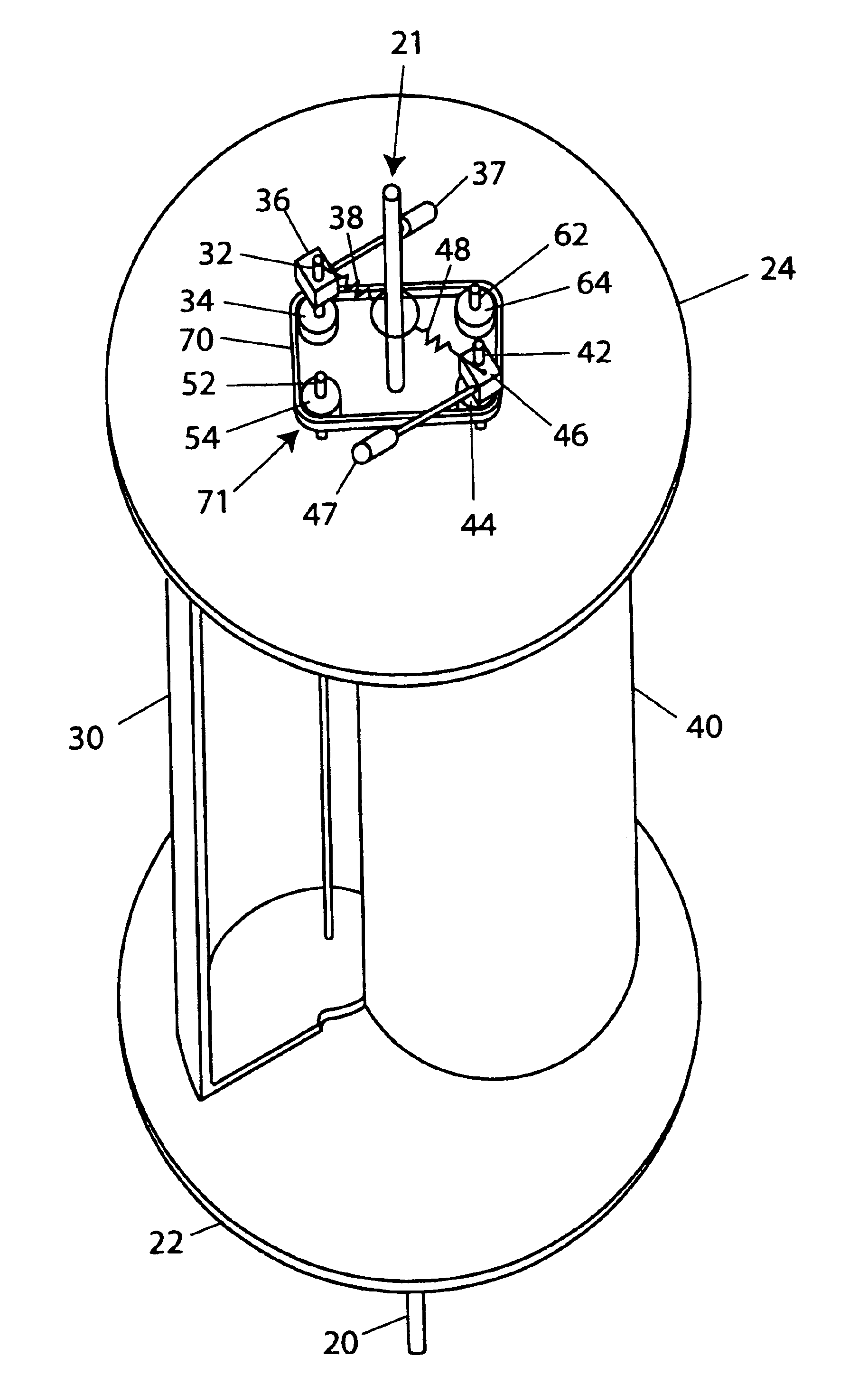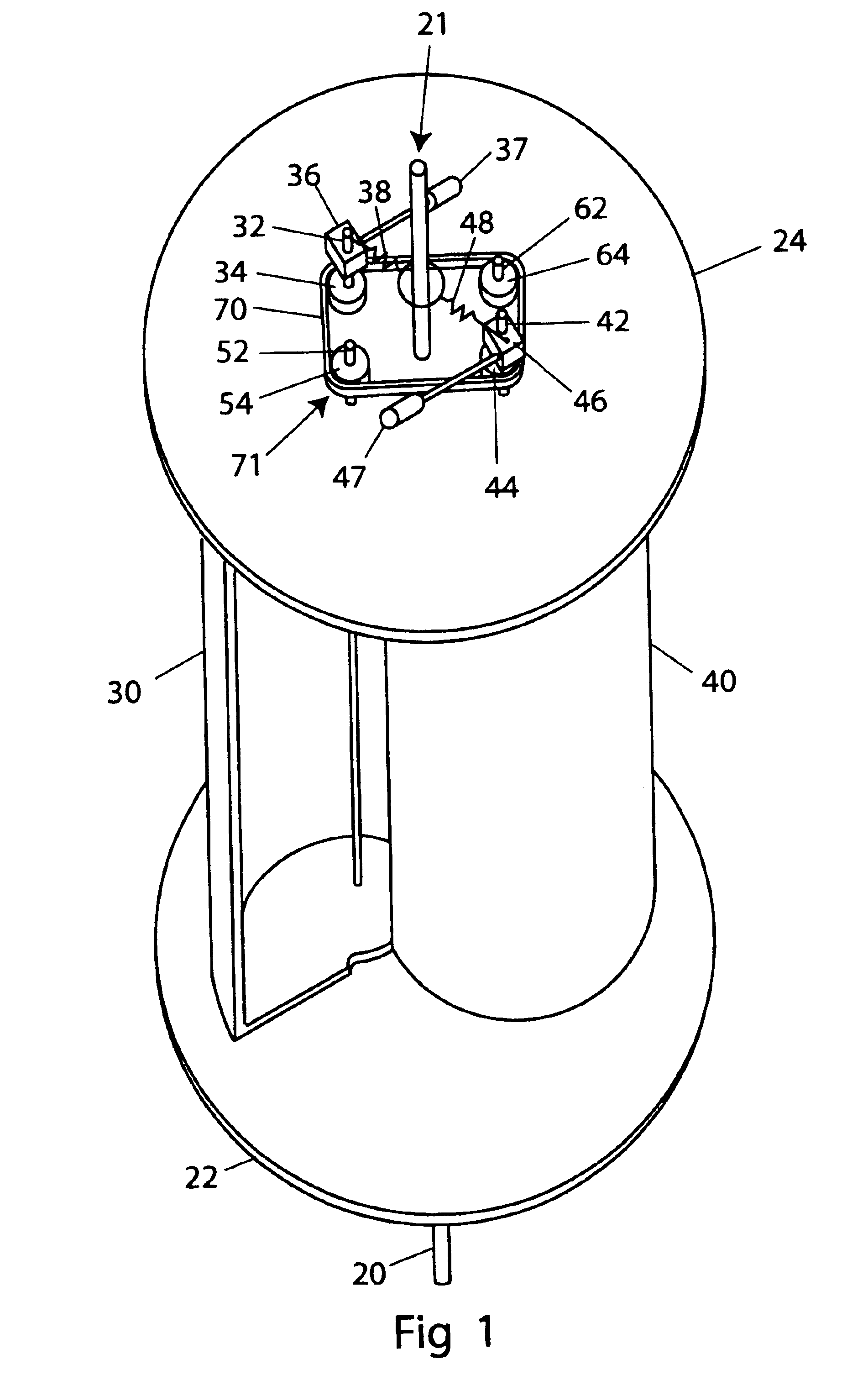Self regulating rotor
a self-regulating, rotor technology, applied in the direction of wind motors with parallel air flow, rotary piston liquid engines, wind motors with perpendicular air flow, etc., can solve the problems of inconvenient use, limited range of wind speeds and inability to operate well for horizontal axis rotor windmills
- Summary
- Abstract
- Description
- Claims
- Application Information
AI Technical Summary
Benefits of technology
Problems solved by technology
Method used
Image
Examples
Embodiment Construction
[0052]Detailed descriptions of the preferred embodiment are provided herein. It is to be understood, however, that the present invention may be embodied in various forms. Therefore, specific details disclosed herein are not to be interpreted as limiting, but rather as a basis for the claims and as a representative basis for teaching one skilled in the art to employ the present invention in virtually any appropriately detailed system, structure or manner.
[0053]A preferred embodiment of the present invention is illustrated in FIG. 1 and FIG. 7. FIG. 1 shows a perspective view of a single rotor section and FIG. 7 shows a front perspective view of a two rotor section assembly. It is understood that the word cups in the specifications can also include vanes. We define a cup to include a vane.
[0054]In FIG. 1 a set of cups 30 and 40 are pivotally attached about a central axis 21, such that they form a closed three dimensional shape when rotated into a closed orientation (FIG. 5), and when ...
PUM
 Login to View More
Login to View More Abstract
Description
Claims
Application Information
 Login to View More
Login to View More - R&D
- Intellectual Property
- Life Sciences
- Materials
- Tech Scout
- Unparalleled Data Quality
- Higher Quality Content
- 60% Fewer Hallucinations
Browse by: Latest US Patents, China's latest patents, Technical Efficacy Thesaurus, Application Domain, Technology Topic, Popular Technical Reports.
© 2025 PatSnap. All rights reserved.Legal|Privacy policy|Modern Slavery Act Transparency Statement|Sitemap|About US| Contact US: help@patsnap.com



